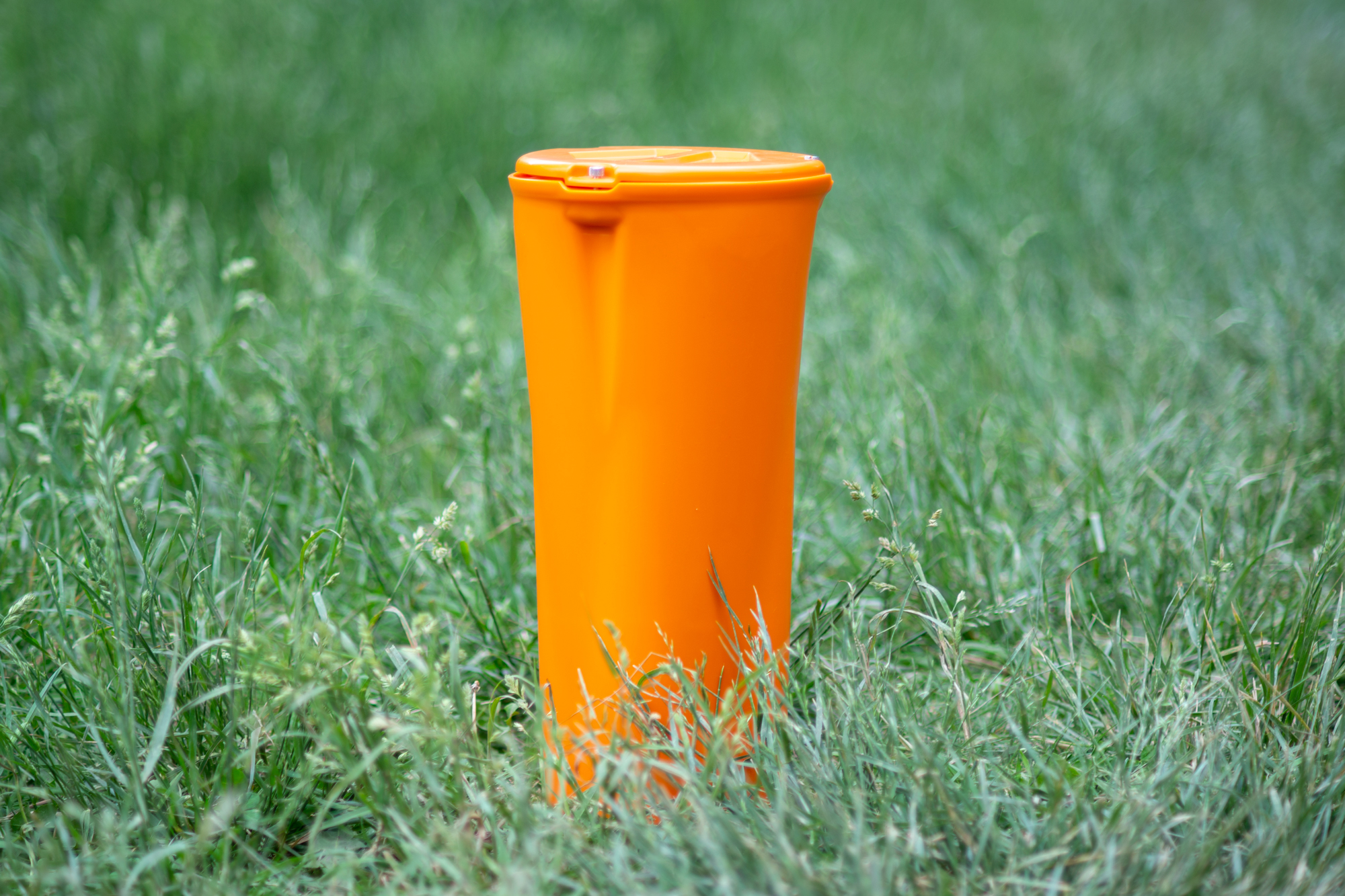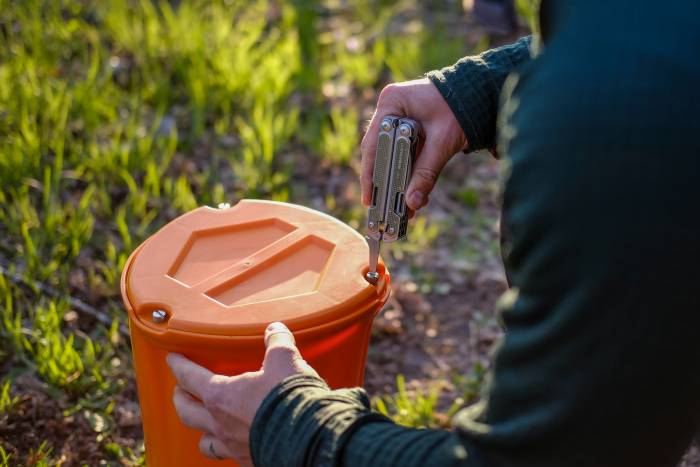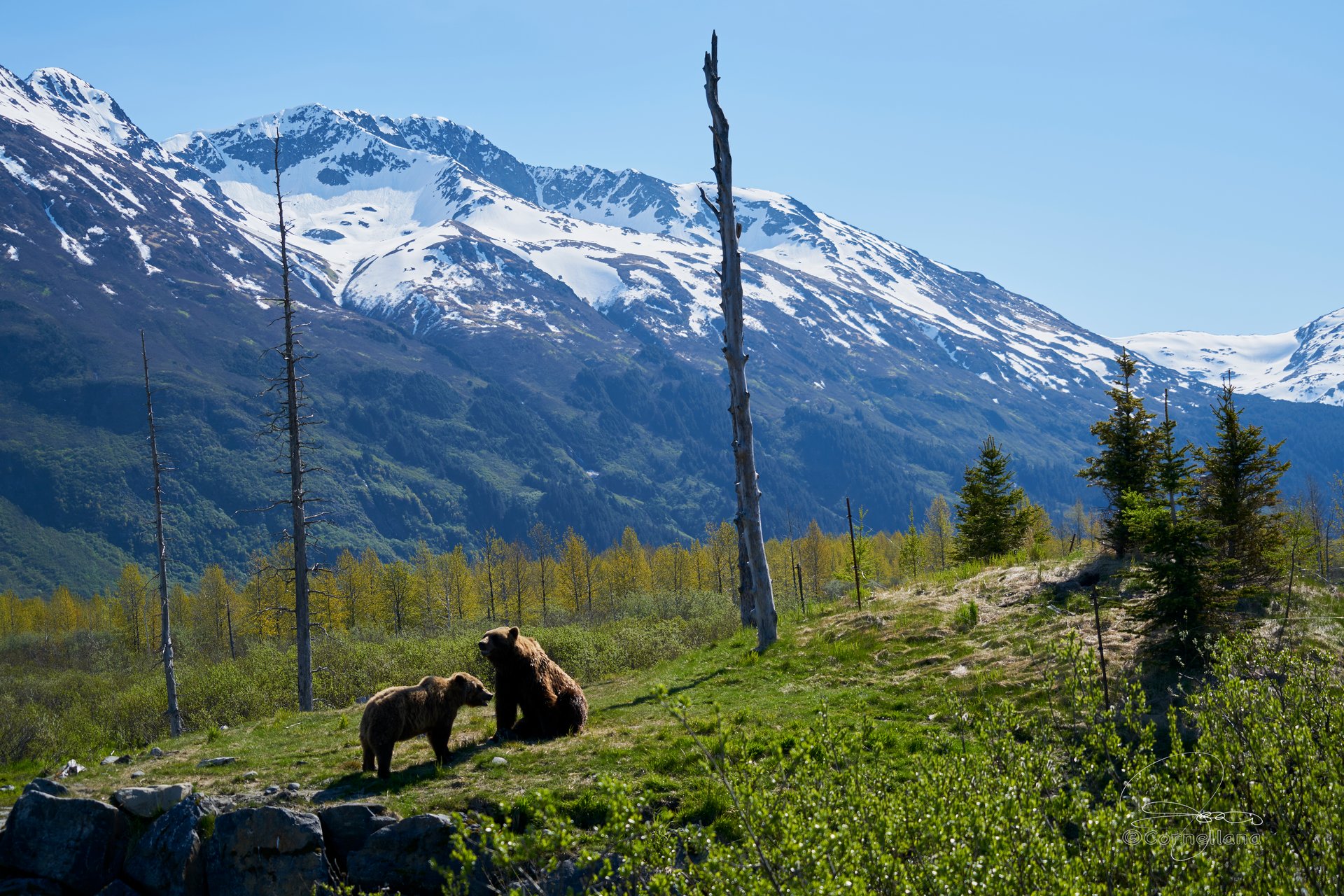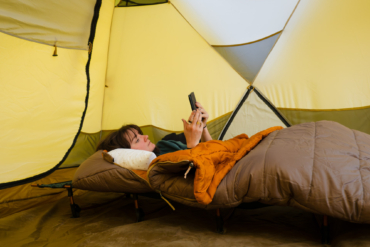You’d probably agree that keeping bears out of your camping supplies is a wise move. But when it comes to bear canisters, what are the best practices?
When it comes to camping, there’s no shortage of varieties or preferences. You can debate backcountry versus campground, the best tent, or even the best season to camp.
What all campers can agree on, however, is that bears aren’t welcome at camp. A bear getting into your food supply will cut your trip short and endanger both you and the bear, which will begin to associate humans with food sources. Thankfully, you can avoid that situation with a bear canister.
Here, we’ll walk you through what a bear canister is, what it’s not, and how to use it.
Shop the SABRE FRONTIERSMAN Bear SafeWhat Is a Bear Canister?
A bear canister — sometimes called a bear can, bear safe, or bear vault — is simply a bear-resistant food container. They are typically hard-sided, weigh 2 to 4 pounds, and offer a storage capacity of 6 to 15 L. Its main purpose is to protect your food from bears, rodents, and other wild animals.
Bears have an incredible sense of smell and can pick up scents from up to 2 miles away. If they smell food or toiletries, their noses will lead them straight to the source.
Even less aggressive bears, like black bears that are generally afraid of humans, can become curious if they smell food. Using a bear canister should help you avoid such unwanted visitors. If you respect wildlife, the hope is that wildlife will respect you back.
If you want confirmation that bear canisters are legit and can withstand the forces of a mighty bear, you can rest easy knowing that there’s an actual bear-resistant certification process that takes place at the Grizzly & Wolf Discovery Center in Montana. Great Big Story provides an inside look at the “most dedicated product testers in the industry” as they ensure bear canisters are grizzly-approved.
How Do You Use a Bear Canister?
First, where you store a bear canister is important. Never store it in your tent. Store bear canisters at least 100 yards from campsites, preferably in the shade. Along with that, cook all your food another 100 yards away from your campsite and your bear canister. Always be certain it’s secure and fully locked and closed. Keeping the canister locked and closed will help to deodorize the area to prevent attracting nearby bears.
The only time your food and other items should be out of the bear canister is when you’re using them. After eating, store any leftover food scraps or trash in the canister. Along with that, fully rinse any food remnants off your cooking gear and store it in the bear canister if there is room. Practice packing it at home before you even go camping to make sure everything will fit in the canister.
Sometimes, opening a bear canister can be tricky. After all, they need to protect your food from bears that can weigh up to 800 pounds. To open bear canisters with screw locks, press the lid down and push the tab past the lock. It’s another reason to bring along a multitool, especially when it’s cold outside.
Where Should I Store My Bear Safe?
It’s important to know where exactly to store it for optimal safety. At night — and at all times — store your canister far away (at least 100 yards) from your campsite, preferably downwind. Even if you’re car camping, you should keep food out of view from bears in case they have seen and accessed things like canned goods before.
Additionally, make sure you don’t place the canister near a cliff or water source. And make a mental note of where you left it so you can easily find it again the next morning.
When Should You Use a Bear Canister?
Put simply: If you’re camping in the mountains where there’s any potential bear activity or any other wild animals, a bear canister is a necessity. Practicing proper bear safety while camping is always necessary. Additionally, bear canisters are required at many national parks.
Yosemite National Park is one of the parks that require bear canisters due to their population of black bears. Another example is Rocky Mountain National Park, which requires bear canisters at all backcountry campsites. Be sure to check the park requirements when planning your trip. Even if there are no regulations where you plan to camp, we recommend using a bear canister to avoid possible interactions with bears if you’re concerned at all.
If you’re day hiking and don’t plan on camping overnight, you likely won’t need one. However, the phrase “better safe than sorry” is a cliche for a reason. If you’re in bear country and your daypack allows it, you can pack any snacks and other smelly items in a bear canister to reduce the risk of attracting a bear.
What to Put in a Bear Canister
While you may think food is the only thing you need to store in a bear canister, there are a few other things you need to store as well. Essentially, anything that has an unnatural smell that could pique a bear’s interest.
This includes:
- Food
- Toiletries
- Lip balm
- Sunscreen
- Toothpaste
- Smelly accessories (eating utensils, stove, pocket knife, etc.)
SABRE FRONTIERSMAN Bear Safe
While there are different options to choose from when it comes to bear canisters, the SABRE FRONTIERSMAN Bear Safe is one of the largest and most lightweight bear canisters you can buy.
Along with that, the bright color makes it stand out so you don’t lose it, even at night. It features a screw-on top that will keep the contents safe.
SABRE FRONTIERSMAN Bear Safe: $70
Shop the SABRE FRONTIERSMAN Bear SafeShould I Buy or Rent a Bear Canister?
Sometimes, campsites provide bear canisters free of charge or for a small rental fee. At some parks, like Yosemite, you have to use the bear canisters that they provide.
If you don’t want to purchase your own, gear shops like REI have them for rent for $8 for the first day and $3 for each additional day ($5 and $2, respectively, if you’re an REI member). If you plan on camping in bear territory for more than a few days, buying one may make the most sense.
Are There Alternatives to Bear Canisters?
An alternative to using bear-resistant food storage containers is a method called bear bagging. However, properly hanging a bear bag can be problematic in areas with sparse or small trees, and downright impossible in places with no trees at all. In some places, it’s simply not allowed.
That being said, bear bags are made of bear-resistant material and, when stored correctly, can make it more difficult for bears to access your food. But bears can still get ahold of them and potentially damage your food and other belongings.
In short, things can go wrong with bear bagging, and carrying a bear canister may be more convenient.
Bear Canisters: Basic Safety Tips
- Always store the bear canister at least 100 years from your tent.
- Along with using a bear canister, you should also cook, eat, and clean at least 100 yards from your tent.
- Brush your teeth away from camp and keep scented hygiene products in the canister with your food.
- Don’t overfill your bear canister.
- Be bear aware. Be alert, make noise, hike in groups, and stay on trails. If you encounter a bear, never run.
- Bring bear spray and know how to use it.
- Make sure you bring all the essentials needed for a great and safe camping experience.
- Follow all tips and tricks regarding how to enjoy a bear encounter.
- Finally, Leave No Trace!
This article is sponsored by SABRE, makers of FRONTIERSMAN Bear Spray. You can find more bear safety products here.











